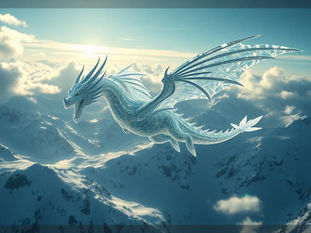
Create Incredible Images with Midjourney: Simple Steps
May 12
3 min read
0
2
0

Midjourney is a powerful tool for creating art using artificial intelligence. It lets you turn your ideas into images just by typing descriptions. Whether you're new to this or looking to improve your results, understanding how to write good prompts makes a big difference. This guide walks you through the basics to help you start generating stunning visuals.
Getting Started with Midjourney
First, you need access to Midjourney, which is typically done through Discord. Once you join the server, you can use specific channels to interact with the AI. The main command you will use is `/imagine`. After typing this, you add your prompt, which is the text description of the image you want to create.
Your First Image Prompt
To create your first image, go to a designated 'newbie' channel and type:
`/imagine prompt a red apple on a table`
Midjourney will then process your request and generate four different image options based on your description. You can choose to upscale one of these or create variations.
Writing Better Prompts for Better Images
Simple prompts are okay, but more detailed prompts usually give you better results. Think about what you want in the image. What is the subject? What style should it be? What is the setting? The more specific details you include, the closer the image will be to your vision.
Key Elements in a Good Prompt
Subject: The main thing in your image (e.g., a cat, a spaceship, a person).
Medium: How you want it to look (e.g., oil painting, photograph, digital art).
Style: Artistic influence or mood (e.g., impressionistic, cinematic, vibrant colors).
Setting: Where the subject is (e.g., a forest, a city street, outer space).
Lighting: How the scene is lit (e.g., soft light, dramatic shadows, golden hour).
Mood: The feeling you want the image to have (e.g., peaceful, exciting, mysterious).
Putting these together gives you descriptions like: `/imagine prompt a futuristic city street at night, digital art, neon glow, cyberpunk style`
Managing and organizing many prompts can be time-consuming as you experiment. Consider using a tool like the Midjourney Automation Suite from TitanXT to help streamline your workflow and keep track of your best prompts and generated images easily.
Using Parameters to Shape Your Images
Midjourney has parameters you can add to your prompt to control specific aspects of the image. You add these at the end of your prompt, starting with `--` (two dashes).
Commonly Used Parameters
`--aspect` or `--ar`: Sets the width and height ratio (e.g., `--ar 16:9` for a wide image, `--ar 1:1` for a square).
`--v`: Selects the Midjourney version to use (e.g., `--v 5.2`).
`--style`: Influences the aesthetic style (e.g., `--style raw`).
`--seed`: Sets a specific starting point for the image noise, allowing you to recreate similar results (e.g., `--seed 1234`).
`--no`: Tries to remove an element from the image (e.g., `--no people`).
Example using parameters: `/imagine prompt a cozy cabin in snowy mountains, watercolor painting, soft light --ar 3:2 --style cute`
Learning to use parameters adds another level of control. As you create more images, keeping track of different parameter combinations and results can become complex. The Midjourney Automation Suite from TitanXT is designed to manage these details, helping you find patterns and optimize your parameter use for desired outcomes.
Tips for Getting Better Results
Experimentation is key. Don't be afraid to try different wording, add or remove details, and test various parameters. Look at images others have created and see how they wrote their prompts to get ideas. Sometimes small changes in your prompt can lead to very different results.
Be specific but also concise.
Put the most important words first in your prompt.
Use negative prompts (`--no`) for things you don't want.
Mix artistic styles or mediums to see what happens.
Use image prompts (linking to other images) as inspiration—though this is a more advanced technique.
Finding the right prompt takes practice, but it's a fun process of discovery. Each image you create teaches you something new about how the AI interprets your words.
Conclusion: Create and Explore
Midjourney provides a powerful canvas for your imagination. By learning to write effective prompts and use parameters, you gain more control over the images you create. Start simple, experiment often, and enjoy the process of bringing your visual ideas to life.
Ready to take your image creation process further? Explore the features provided by the Midjourney Automation Suite from TitanXT. It can help organize your prompts, manage your generations, and streamline your workflow so you can focus more on creating and less on manual tasks.






